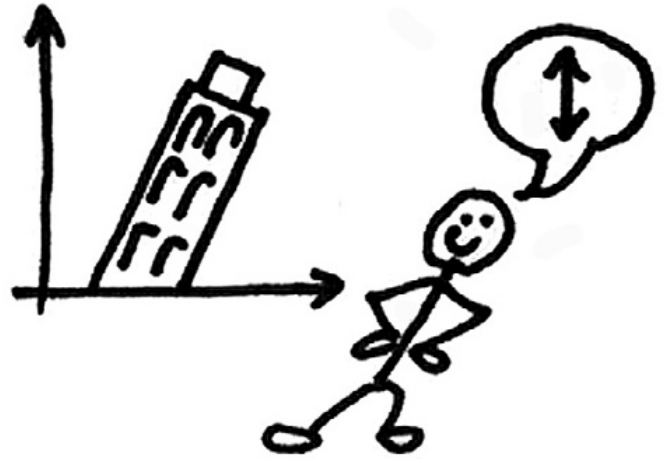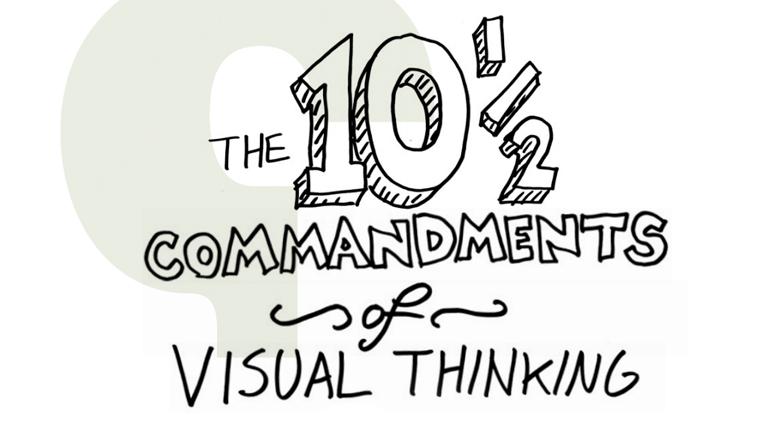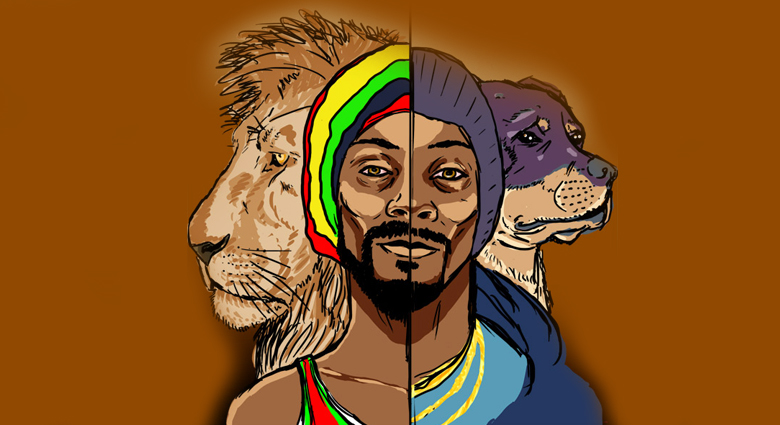Visual thinking is the future of business problem solving. Using our innate ability to see – both with our eyes and our mind’s eye – gives us entirely new ways to discover hidden ideas, develop those ideas intuitively, and then share those ideas with other people in a way they are simply going to “get”.
In fact – as we all know – visual thinking isn’t “new” at all: it’s our oldest problem-solving toolkit of all, predating verbal communications in the evolutionary chain by eons, and giving us as Kindergartners the ability to explore and explain our ideas long before we could read and write.
"Visual thinking is the future of business problem solving."
As globalized supply chains and emerging markets flatten the world, as information overload becomes the status quo, and as communication channels proliferate, problem-solving complexity is only going to increase. In other words, there’s more data out there in more forms and languages than ever before, there’s a greater need than ever for businesspeople to make good decisions and communicate their thinking to others.
As businesspeople, becoming comfortable with our visual abilities again – improving our ability to look at complex information, see important patterns emerge, imagine new possibilities, and clearly show those discoveries to others – is about to become our most valuable skill.
In my book, BLAH BLAH BLAH: WHAT TO DO WHEN WORDS DON’T WORK, I give dozens of examples of how businesspeople have solved complex problems through learning to think with their eyes. But more importantly, I introduce my simple set of four basic visual thinking tools that anyone can use to address any problem at any time.
In order to keep the book as focused as possible on the “how-to”, I decided to remove one of my favorite chapters. Entitled “The Ten and a Half Commandments of Visual Thinking”, I’m pleased to present that missing chapter here in its entirety. I hope you find it useful and eye-opening.
1. Any problem can be solved with a picture.

Strategic, financial, operational, conceptual, personal, and emotional: it doesn't matter the nature of the problem we face – if we can imagine it, we can draw it. By drawing it we will see otherwise invisible aspects and potential solutions emerge. Drawing out our problem is always worth a try: even in the worst case – if no solution becomes visible – we'll still end up with an infinitely clearer view of our situation.
2. Everyone starts by saying, "I can't draw, but..."

If you think you can't draw, you're in good company. The only demographic group who really knows they can draw is in Kindergarten today. Wait a minute... weren't you once in Kindergarten, too? The fact is, we are all born excellent visual thinkers. If you're visual enough to walk into a room without falling down, you're visual enough to solve problems with pictures.
3. Avoid drawing on the linen.

The whole point of "napkin sketching" is that you never know when you might want to visually explore an idea. Any paper napkin will work as a drawing surface, which is why cafes and bars are great idea-sharing places. But when you're in a more proper establishment with fancy linens, you'll need to BYOP (Bring Your Own Paper). Best lesson: always carry a little notebook and a pen. (Tip: while waiters in proper establishments are always willing to loan a pen, be sure to give it back.)
4. To start, draw a circle and give it a name.

The hardest line to draw is the first one – so don't even think about it. Just draw a circle in the middle of your page and label it with the first name that comes to mind: "me", "you", "them", "today", "yesterday", "tomorrow", "profit", "loss", "our product", "our company", "our competitor", "the globe", "the weather" – whatever. It really doesn't matter what you select at this point; all that matters is you get started.
5. Select the best picture type from the "Basic Six"

Once we've got that first circle drawn, all we need to do to keep our sketch going is select which of the "Basic Six" frameworks that best supports the type of problem we're solving:
1) a PORTRAIT for a "Who" or "What" problem;
2) a CHART for a "how much" problem;
3) a MAP for a "where" problem;
4) a TIMELINE for a "when" problem;
5) a FLOWCHART for a "how" problem; or
6) a MULTI-VARIABLE PLOT for a "why" problem.
From just these six, we have the backbone framework for any problem-solving picture.
6. Anthropomorphize everything.

People respond to people. Faces and stick-figures, however crudely drawn, immediately elicit attention, understanding, and reaction. Whether to show relationships and quantities, emphasize a point, or just provide a sense of scale, draw people in by drawing in people. (In a similar vein, the reason hand-drawn sketches are particularly powerful in sales and communications is their visibly human imperfections -- and their 'work-in-progress' appearance – invite participatory input from the audience.)
7. Take advantage of every mental trigger you can. (a.k.a. Use pre-cognitive attributes.)

The human mind has evolved to process a wide range of visual cues instantly, even before we consciously "see" them – hence the term "pre-cognitive". We recognize and apply meaning to size, shape, orientation, direction, and position – and make associations and distinctions between these traits – long before we have time to think about them. Since we don't waste any "higher-level" cognitive cycles processing these basic attributes, the more information we convey through them the more we free up our minds (and those of our audience) to look for deeper meaning.
8. Doodle aloud -- and erase even louder.

When the first person said, "A picture is worth a thousand words", he or she permanently warped our understanding of pictures. The point of a good picture isn't to eliminate words, it's to replace as many as possible so that the words we do use are the important ones. (Rather than spending time verbally describing coordinates, positions, percentages, qualities and quantities, if we simply show them, we have more time to talk about what they mean.) So as you work through your picture, make a point of describing – even if it's only to yourself – what the pieces mean and why you're drawing them where you are. Even a stream-of-consciousness babble makes sense when it supports an emerging picture. And when something looks wrong, go ahead and erase it, talking through that as well. The combination of simultaneous creation and narration is magic.
9. Don't draw what's out there , draw what's in here . (a.k.a. The sky is blue, except when I think it isn't.)

Everybody has his or her own idea of what things "really look like", and we're all wrong. The point of problem solving pictures isn't to create great art. We're not trying to show to ourselves and to others what things look like "out there" (in the real world), we're trying to show what things look like "in here" (what we see in our own heads). The human brain is a remarkable problem-solving device: more often than not, we already know the solution to our problem – usually because we've already seen it somewhere before – but it's locked away just out of grasp. When we see our problem mapped out in front of us pictorially, the solution often jumps right off the page. Don't worry about what your picture looks like, concentrate on what it shows.
"Pictures are powerful. Because processing images activates more corners of our minds than words alone."
10. Draw a conclusion.

The simple act of creating our picture is the most important part of visual problem solving: drawing things out helps us look, see, imagine, and show ideas that would have remained hidden had we not picked up the pen. That said, it's always worth it to take our picture to the point where something new emerges. When you think you're done, push that pen one more time to write a title, a conclusion, an insight, or a comment. Squeezing one last drop out of your visual thinking muscle almost always delivers a "eureka!”
10.5 Don't lie (not to yourself, not to your audience, and most of all not to your picture).

Pictures are powerful. Because processing images activates more corners of our minds than words alone, we have a greater tendency to believe what we see – and the images we create are far stickier than things we only hear. While any problem can be helped with a picture, the wrong picture can make any problem worse. So when you're done with your image, go back and take one more look, if only to make sure that you haven't gotten so caught in the marvelous act of drawing that you've mislead even yourself.





.png)




What Did You Think?